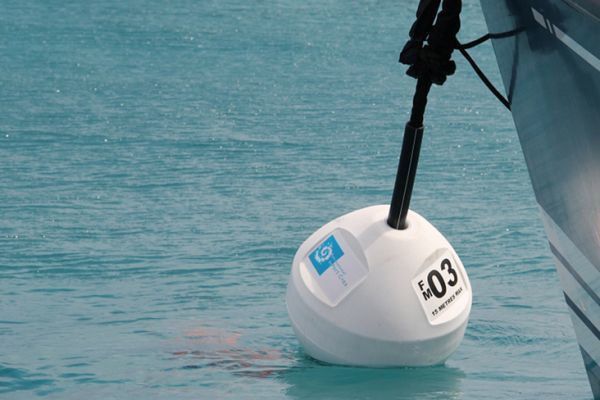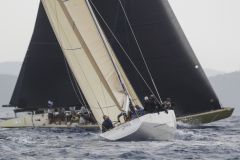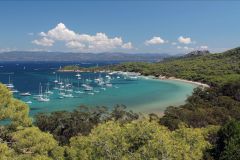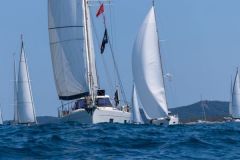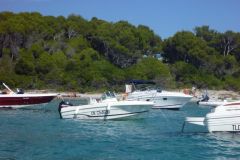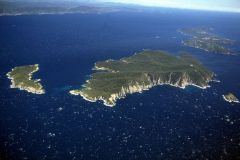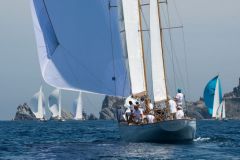The Parc National de Port Cros answers our questions. Marc Duncombe, its Director, explains in detail the project to set up anchorage areas around Porquerolles. In particular, he answers questions from yachting associations lining up against the ZMEL project in Porquerolles.

How did you come up with the project?
Over a period of 2 years, we organized 12 preparatory meetings in which local stakeholders and boaters were involved. So it's a project that's been co-constructed with users. Of course, not everyone is happy about the introduction of restricted anchorage zones with buoys. But we tried to please everyone.
What is the aim of this project?
In the National Park, we see pleasure boating as a way of discovering the park. The challenge is to welcome boats while respecting the environment. For example, Posidonia meadows are areas that need to be protected. Our surveys over the last few years show that the meadows are attacked by over 100 km of mooring chains every year. We want to prevent this by equipping them with mooring buoys.
So the buoys will only be on the seagrass beds?
Yes, the plan is to install the buoys on the seagrass beds, with helical anchors that screw into the ground. The sandy, non-seagrass areas, often closest to the beaches, will remain free for anchored moorings. The buoys are guaranteed to withstand winds of up to force 7. Of course, this depends on the boat's dunnage, but should be sufficient.
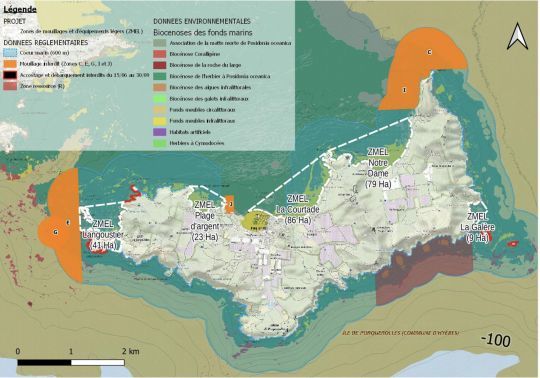
is 350 buoys enough?
It is estimated that around 300 boats can be moored in the sandy areas. With the 350 buoys, this brings the total to 750 boats. According to our records, there are only 8 days a year, at the height of summer, when there are 1,000 boats on the Porquerolles coast. These are always days of very fine weather, when the highest density exists and will exceed mooring capacity. On these days, we'll probably have to position some of our boats aft.
What about buoys in winter?
The buoys will only be installed for the season, from Easter to September. In winter, the buoys will be detached from their anchors, but the anchors will remain in the ground. In fact, we won't be wetting over them to avoid hooking into them. But as this is a seagrass area, anchoring is forbidden. And a good sailor knows that his anchor won't hold in the weed. It's better to anchor safely on the sand. And out of season, there's plenty of room for everyone.
Will there be a charge for these buoys?
We want to apply the same system that has been in place at Port-Cros for the past 2 years. The buoys are free during the day. To spend the night, you need to book via an app. The first 2 nights have a fixed price, which doubles every day thereafter. We set up this system to prevent boat-hoarding. The system also improves every year. At Port-Cros, you can now choose your buoy, whereas before this was not possible.
What's the timetable?
We'd like to start installing these buoys on the Notre-Dame and Langoustier beaches. If possible by summer 2024. And the following year with the Courtade and Plage d'Argent beaches. The Galère beach buoy should also arrive in 2025.
Do you understand the anger of some churchgoers?
As a yachtsman myself, I'm the first to want to preserve my freedom at sea. But the concentration of yachting and the sheer number of people involved mean that we have to regulate. The survival of the environment and the enjoyment of our hobby depend on it.
